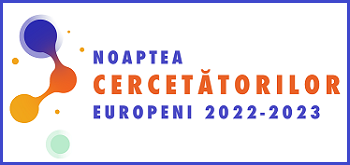| Articolul precedent |
| Articolul urmator |
 |
 728 728 1 1 |
| Ultima descărcare din IBN: 2021-03-19 02:47 |
 SM ISO690:2012 SM ISO690:2012FEDICHKIN, F., JOUAULT, Benoit, GUILLET, Thierry, BRIMONT, Christelle, VALVIN, Pierre, BRETAGNON, Thierry, LAHOURCADE, Lise, GRANDJEAN, Nicolas, LEFEBVRE, Pierre, VLADIMIROVA, M.. Indirect excitons in polar group-III nitride quantum wells. In: Materials Science and Condensed Matter Physics, Ed. 8-th Edition, 12-16 septembrie 2016, Chişinău. Chişinău: Institutul de Fizică Aplicată, 2016, Editia 8, p. 37. ISBN 978-9975-9787-1-2. |
| EXPORT metadate: Google Scholar Crossref CERIF DataCite Dublin Core |
| Materials Science and Condensed Matter Physics Editia 8, 2016 |
||||||
|
Conferința "International Conference on Materials Science and Condensed Matter Physics" 8-th Edition, Chişinău, Moldova, 12-16 septembrie 2016 | ||||||
|
||||||
| Pag. 37-37 | ||||||
|
||||||
| Rezumat | ||||||
Excitons in polar group-III nitride quantum wells (QWs) are naturally indirect, because electron and hole within such excitons are spatially separated. As a consequence, they have strong dipole moments and long radiative lifetimes. Extensive studies of indirect excitons (IXs) in GaAs-based heterostructures have shown, that a combination of these two features results in many interesting properties of IXs: they can propagate over large distances, can be controlled in-situ by light and external gate voltage, cool down to the lattice temperature before recombination, and form cold and dense gas of interacting bosons. Compared to traditional IXs in arsenide heterostrutures, IXs in nitride QWs have much larger binding energies and smaller Bohr radii. This allows exploring IX propagation up to room temperature, and over two orders of magnitude higher density range. Using spatially- and time-resolved photoluminescence experiments we examined temperature, density, substrate material (GaN vs Sapphire) and excitation regime (cw vs pulsed excitation) dependence of the exciton transport in 7 nm wide GaN QW sandwiched between Al0.19Ga0.81N barriers, the structure is characterized by internal electric field of order of 1 MV/cm. Comprehensive analysis of the data combined with numerical modeling show that in GaN QWs efficient propagation of IX takes place in the high density regime where the in-plane disorder is efficiently screened by the dipole-dipole interaction. Under these conditions, exciton mobility is almost temperature-independent from 10 K up to room temperature. This suggests that excitonexciton interaction is by far dominant scattering mechanism, compared to scattering on the interface disorder. In this context, we argue that nitride-hosted IXs constitute a promising system for formation of collective bosonic states in semiconductors1, 2. |
||||||
|












